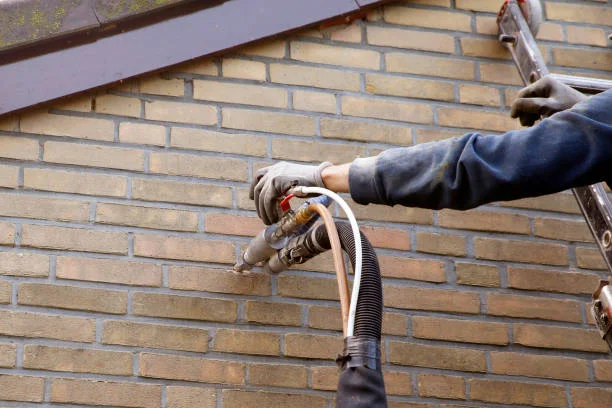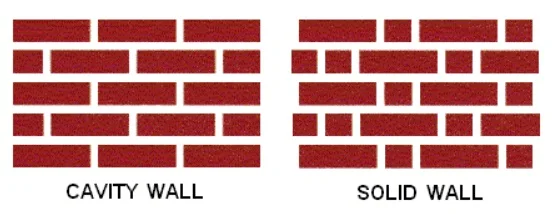Advantages of Cavity Wall Insulation
Houses all over the UK are either completely solid or have a cavity wall. If your home was built anywhere between the years 1920-1982, there is a great chance it has an empty cavity wall. Houses that are built before 1920 are solid mostly and the ones made after 1982 have cavity wall insulation.

What’s on this page?
How Can I tell if My House has a Cavity Wall?
If you can see the bricks on the outside of your house, it is very easy to determine whether or not it has a cavity wall or not just by looking at the pattern. If the bricks are laid lengthways in an even pattern, your house has a cavity wall. If the bricks are not even i.e. some are laid across the wall so you can see the smaller ends outside, it is a solid wall.
Even if the brickwork isn’t visible because it is covered, you can find out about the cavity wall by measuring the width of the wall. Observe a door or window on one of the external walls. If the wall is more than 26 cm in thickness, your house has a cavity wall. If it is less than it is most probably a solid wall.

What is Cavity Wall Insulation?
Insulating materials are used to fill in the cavity wall in order to stop the heat from being transmitted out of the house. The materials used most commonly are mineral wool, polystyrene beads or sometimes polyurethane foam. The cavity is found between the two exterior walls.
Benefits of Having Cavity Wall Insulation
You must be thinking why it is a good idea for you to think of getting cavity wall insulation if your home doesn’t have it. Well here is why:
- More than one third of the heat that is produced by heating systems is lost through walls that have no insulation. This means that you would have to use heating for longer periods of time in order to maintain comfortable temperatures.This directly translates to huge energy bills. Cavity wall insulation would help you save a lot of money. Depending on the type of property you have, here is an estimate of what you can save in a year:
- Detached house – £245
- Semi-detached house – £145
- Mid terrace house – £90
- Bungalow – £100
- Flat – £70
Note: This is relevant for properties in England, Scotland and Wales.
- Using heating systems less because of cavity wall insulation will also help in reduction of the carbon footprint of your house. With climate change already showing its harmful effects, insulation has become an important choice.
- Getting cavity wall insulation would increase the value of your property in case you sell it in the future.
How is Cavity Wall Insulation Fitted?
For an average sized property, the process of cavity wall insulation takes only 2-3 hours. To fill the cavity wall, insulation material can be blown in or injected from the outside via drilled holes. When the process is done the holes are sealed using cement.
If you are convinced to get cavity wall insulation, contact Marigold Eco here to see your options.
